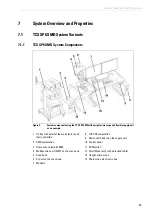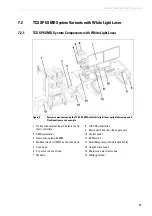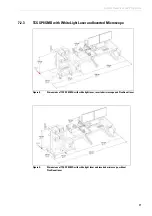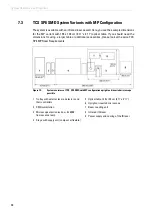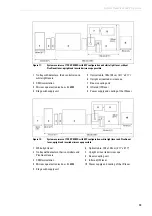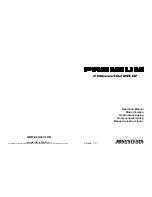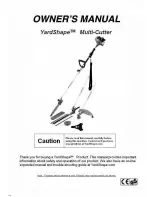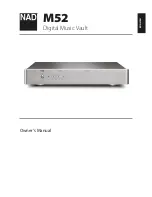
25
General Safety Notes
• Never expose your eyes or skin to direct or indirect laser radiation. The radiation
can
cause irreparable eye and skin injuries.
• During the scanning operation, the laser radiation is accessible in the microscope's
specimen area without obstruction after coming out of the objective. Always maintain a
nominal ocular hazard distance of at least 20 cm (8") between your eyes and the opening
of the objective.
Figure 1:
Specimen area of upright and inverted microscope
• Make sure that the fiber optic cables are not damaged. The system may not be turned on
with damaged fiber optic cables, as laser radiation can escape and lead to irreparable
eye and skin injuries.
• It is not necessary to wear protective eyewear when using VIS and UV systems. When
used as intended and safety notes have been followed, laser radiation is kept within the
limit value that eliminates the chance for eye injuries.
• Do not use an S70 microscope condenser. The large working distance and the low
numerical aperture of the S70 microscope condenser could result in a hazard from laser
radiation.
• Only use S1 and S28 Leica microscope condensers.
• Do not look into the eyepieces during the scanning operation.
• Never change samples during a scanning operation.
• Never change objectives, filter cubes, beam splitters, condensers or other components
during a scanning operation.
• Do not look into the eyepieces when switching the beam path in the microscope.
• Do not introduce any reflective objects or mirrors into the laser beam path or into the
specimen area.
• If there is no lamp housing or mirror housing connected to the microscope, attach the
cover to the replacement flange.
• All unoccupied positions in the objective nosepiece must be closed using the supplied
caps.
• For MP systems, dry objectives (air objectives) may not be used with a numerical
aperture (NA) larger than 0.85. This does not apply to immersion objectives (oil, water).
Summary of Contents for TCS SP8 SMD
Page 1: ...10 Living up to Life User Manual Leica TCS SP8 SMD for FCS FLIM and FLCS ...
Page 4: ...4 Copyright ...
Page 14: ...14 Contents ...
Page 18: ...18 Intended Use ...
Page 20: ...20 Liability and Warranty ...
Page 28: ...28 General Safety Notes ...
Page 32: ...32 Additional Notes on Handling the System ...
Page 44: ...44 System Overview and Properties ...
Page 60: ...60 SMD Components Figure 31 DSN 102 Dual SPAD Power Supply ...
Page 80: ...80 Safety Features ...
Page 102: ...102 Switching On the System ...
Page 116: ...116 LAS AF ...
Page 214: ...214 Changing the Specimen ...
Page 216: ...216 Changing the Objective ...
Page 238: ...238 Switching Off the System ...
Page 242: ...242 Repairs and Service Work ...
Page 244: ...244 Maintenance ...
Page 246: ...246 Disassembly and Transport ...
Page 248: ...248 Disposal ...
Page 254: ...254 Contact ...
Page 256: ...256 Recommended Literature ...
Page 266: ...266 Appendix Figure 225 Declaration of conformity ...
Page 268: ...268 Appendix ...
Page 269: ......























